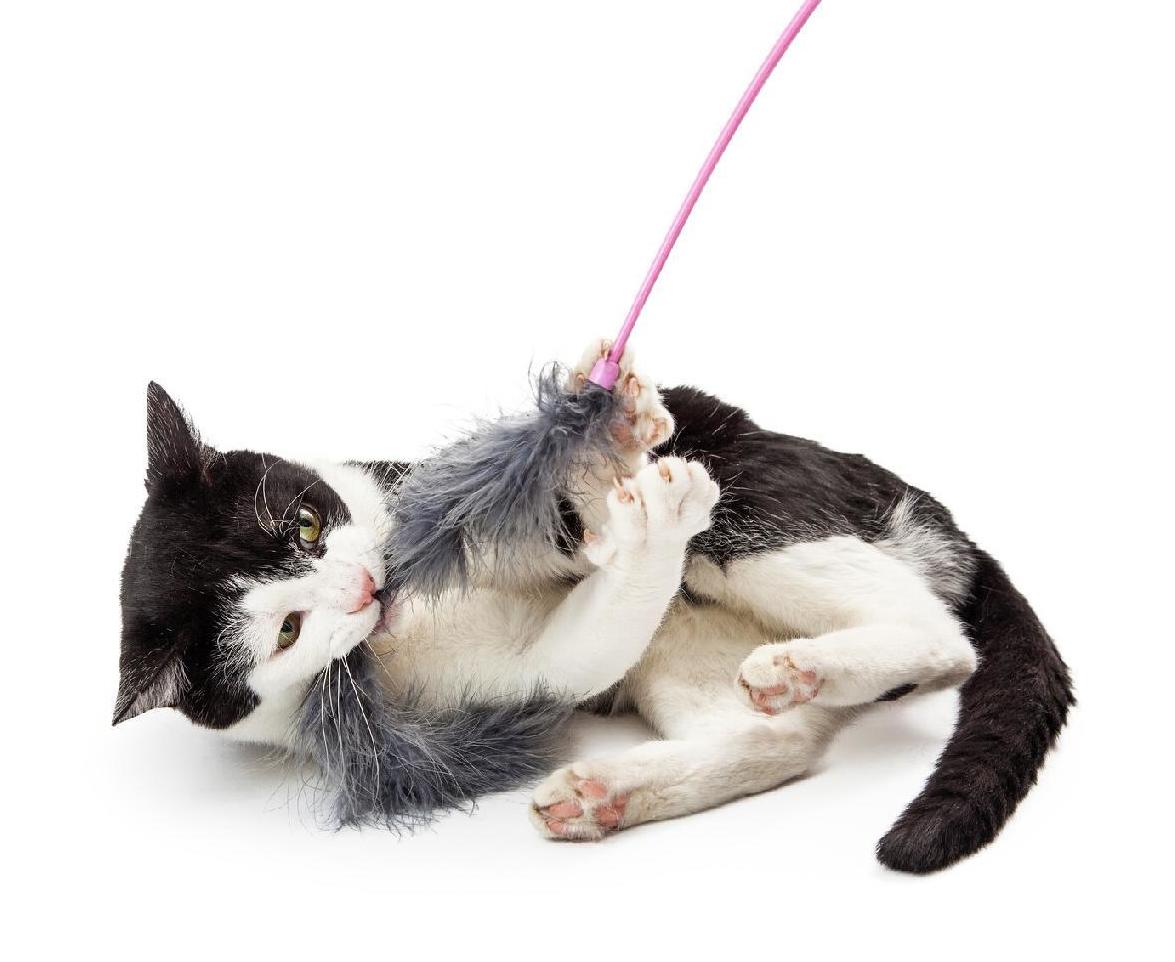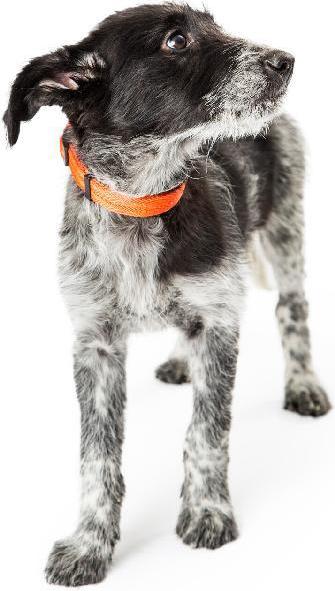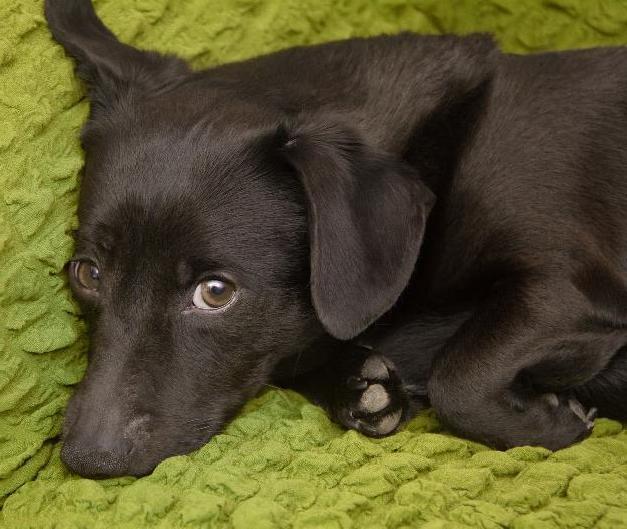
16 minute read
Tamsin Durston discusses delivering agility or sports dog training classes from a behavioral perspective to ensure both dog and handler can thrive
t r a i n i n g Resource Guarding vs. Rule Setting: Training and Management
In the second of this two-part feature, Suzanne Clothier takes a closer look at resource guarding vs. rule setting, the zones which tell the tale, and differences in how to develop training and management strategies
Advertisement
© Can Stock Photo / dmetsov Rule setters can be more controlled in their behavior and because their behavior is not governed by anxiety, there is confidence and deliberation in their actions
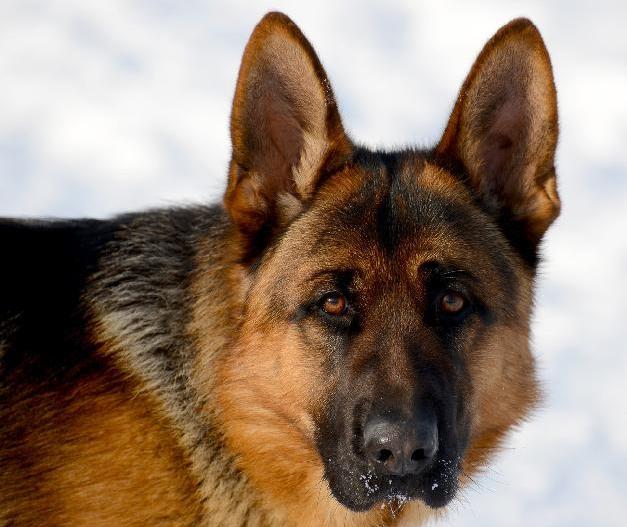
In the first part of this article I explained the distinction I make between resource guarding and rule setting in canine behavior, and why this categorization influences my approach to addressing behavior issues (see Resource Guarding or Rule Setting?, BARKS from the Guild, March 2021, pp. 28‐30). We can now break things down even further.
Which Is Which?
How do we know if we’re dealing with resource guarding or rule setting? For me, the answer lies in a constellation of observable behaviors which, taken together, tell the tale. I think of this as The Zones.
Many guardians are quite puzzled when an eager-to-go dog suddenly balks about getting into a vehicle or going outside. If they have a rule setter, that dog can be creating the conflict.
© Can Stock Photo / NataliaSavilova The less confident the dog feels about his ability to protect a resource, the closer he will keep that resource
Ownership Zone: This is the actual physical space in which the dog has ownership of or control of the resource.
Defense of Possession Zone: Where is the point where the dog feels that his control of a resource may be threatened in some way? Where is defense of possession triggered?
Influence Zone: Where is the point where the dog is able to create a response in another being? How does the dog achieve this: with physicality or with psychological presence?
Response Zone: Where does the dog responds to another’s physical or psychological presence? His response may be avoidance or aggression.
Resource Guarding
There is an inverse relationship between a dog’s ownership zone and his defense of possession zone. The less confident the dog feels about his
ability to protect a resource, the closer he will keep that resource. This dog will also feel that the resource is threatened from a bigger the distance. Thus, the dog may react even when a perceived threat is quite a distance away.
Such dogs can usually only influence other dogs at relatively close range. Additionally, they may have to resort to dramatic displays and even physical confrontation in order to retain possession.
Because anxiety is part of the picture, the less confident dogs are influenced by others from a greater distance, so the response zone may be considerable. This can surprise guardians, who often report, “No one was even near her and she just attacked!”
Rule Setting
The more confident a dog is, the greater the distance at which he feels able to maintain control of a resource. One tipoff that a dog is rule setting rather than resource guarding is the distance the dog is from the resource. If the guardian reports, “His toy was in the middle of the room and he was resting on the far side of the room. When I bent down to pick it up, he growled and charged at me.” This is in sharp contrast with the resource guarding dog who has lowered his head and neck over an object or curled himself protectively around it.
The distance at which the rule setting dog will feel that resource is threatened is typically small, so others can often get quite close before the dog shows any overt signs of concern. There can be subtle signs that the dog is shifting from unconcerned to watchfulness: change in the gaze or ear orientation, small inclination of the head towards the object, even switching which hip to lay on or rolling sternal. If unaware of these shifts, people and other dogs can be unpleasantly surprised when the defense zone is finally triggered.
The rule setting dogs can have large influence zones. They can be capable of influencing the behavior of others or even threatening them from a considerable distance. And they can often do it using just psychological presence without needing to use overt physicality. Again, this can take both guardians and trainers unawares if they do not recognize how a confident dog can control others from surprisingly far away.
All zones can shift depending on the situation. A dog at home may have one set of zones. Out of the home environment, his zones may change dramatically (for better or worse) – he may be far bolder or less confident.
Knowing your dog’s zones and how they change depending on the situation will help you help know how best to handle him.
Pay attention to what influences may be affecting the dog’s zones. As I mentioned before, anxiety and/or a lack of social confidence can play a big part in how the dog perceives the situation. Generally speaking, anxiety sensitizes the dog to stimuli and may result in the perception of a threat where none may actually exist. Social dynamics are contributory. A dog may be unconcerned about an individual dog or person but have a very different response to others. A lack of social confidence can combine with anxiety over possibly losing the resource to make for a very distressed dog. If environmental concerns are also part of the mix, it all compounds for the dog.
There is an inverse relationship between a dog’s ownership zone and his defense of possession zone. The less confident the dog feels about his ability to protect a resource, the closer he will keep that resource.
Therefore What?
It is beyond the scope of this article to describe the protocols that are available to address resource guarding and rule setting. But here are the key aspects that I focus on for each type of dog:
Resource Guarding: When working with this type of dog, I take care to keep uppermost in my mind that the emotional state of the dog is key. My approach emphasizes building positive associations with being approached when in possession of a resource.
It is critical that the subtlest shifts be recognized and respected. Wellmeaning trainers and guardians can work in slices that are far too big, so that the dog is already close to his threshold from the start. I am looking for the smallest signs that the dog is feeling pressure – shifting of weight without moving a foot, shift in gaze orientation, change in the shape of the eye, etc.
An appropriate and tight feedback loop between your responses to the dog’s behavior goes a long way to establishing trust in interactions with you, lowering anxiety and keeping the dog in the Think and Learn zone.
Goals:
• Assess temperament – is the dog traitanxious? Stateanxious? • Educate handlers in the specifics of how this individual dog expresses shifts in body language. • Reduce anxiety: o Build social confidence (my TreatRetreat program can be helpful). o Address environmental confidence. o As per veterinary behaviorist, medical intervention. o Massage or other body work if appropriate. o Adjustments in management, husbandry, enrichment and training practices. • Identify sensory sensitivities or deficits which may be
ATTENTION WRITERS! Get Published in BARKS from the Guild or on the BARKS Blog!
Got something to share? We are always on the lookout for interesting features, member profiles, case studies and training tips to feature in BARKS from the Guild and on the BARKS Blog. If you’d like to join the growing band of member contributors, please get in touch!
BARKS from the Guild BARKS blog

Email: barkseditor @petprofessionalguild.com
contributing to anxiety. • Identify any physical components (structural, functional, pain) that may be contributing to the dog’s concern. • Countercondition approach to dog and resource. • Countercondition touch and removal of object (always give it back!). • Create management plans for situations where deliberate training is not possible. • Teach: o Drop (Chirag Patel’s technique is wonderful). o Go to bed/place. o Back. o Trade.
Note: Hand feeding is frequently recommended in resource guarding protocols, sometimes including putting the dog’s food bowl in the handler’s lap. This makes limited sense to me. By dog law, a bowl in your possession is your resource, and that you’re willing to share or give the dog access to it simply confirms that you – and not the dog – are in control of the resource. He does learn that you’re nice about sharing, but that does not always translate to making the dog willing to share. However, if your goal is simply to habituate the dog to be very near a person in the presence of the food bowl, and to be comfortable with hand feeding, then this may be a useful addition to the plan.
Rule Setting: For rule setting dogs, remain aware that these dogs have the confidence and intelligence to set rules about access to resources. While I don’t typically find these dogs to be trait anxious, I do find them to be socially savvy and well aware of who they can influence and who may ignore them. This can confuse anyone stuck in the old dominance theories. There is not a rigid hierarchy but rather a social intelligence at work.
In my experience, the rule setters can be more controlled in their behavior. Because their behavior is not governed by anxiety, there is confidence and deliberation in their actions. This does not mean they will not escalate their behavior dramatically to make their point if necessary.
Goals:
• Assess temperament. o Is the dog confident? In what ways? o How does the dog use space socially? • Educate handlers in the specifics of how this individual dog expresses shifts in body language. • Consider adjustments in management, husbandry, enrichment and training practices with specific consideration on the use of space. • Implement Attentive Cooperation protocol (Puppy Politeness Poker – see Resources) to help both dog and handler learn to work together using reallife rewards. • Identify sensory sensitivities or deficits which may be contributing.


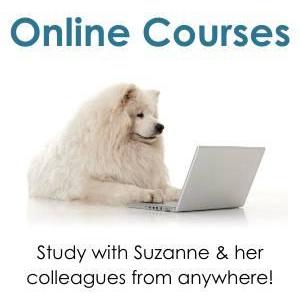

Blending heart & science for the thinking trainer

© Can Stock Photo / jrphoto The Ownership Zone incorporates the actual physical space in which a dog has ownership of or control of the resource

• Identify any physical components (structural, functional, pain) that may be contributing to the dog’s need to set rules. • Work with the handler to be sure that the dog knows how to be right, develop specific skills as needed so dog can be right, and the importance of generous reinforcement. • Countercondition approach to resource by other dogs – deliberate setups are necessary. • Countercondition approach by people. • Countercondition touch and removal of object (always give it back!). • Management plan for situations where deliberate training is not possible. • Management plan for situations where training will not be sufficient. • Teach: o Drop (as mentioned earlier, Chirag Patel’s technique is wonderful). o Go to bed/place. o Back. o Trade. • Use of warnings and consequences such as timeout or social exclusion if necessary.
Particularly in multidog situations, guardians need to become more sensitive to the use of space, how the rule setting dog can influence others even from a considerable distance, and recognize that the rule setting dog may need constant supervision.
The Behavior in Action
Over the years, I have lived with animals who were resource guarders. One was an offthetrack Thoroughbred I adopted. He was a resource guarder, and felt threatened from quite a distance by even benign horses who were simply passing by to get a drink or step into the shade. He made his point with teeth, and in his first few months had put quite a few marks on the other horses, though he never directed any aggression towards people.
I was brushing him one day, something that he loved, and he was standing quietly and enjoying the attention. One of our barn cats walked past, and in a flash, this horse spun and lunged open mouthed with pinned ears and serious intent at the startled feline. Thankfully, the cat was faster and rocketed out of the barn unharmed.
Distress to the animal and/or others makes resource guarding problematic. And this behavior certainly qualified. The horse clearly needed to be in a situation where he did not have to share resources which included my attention. Sadly, I let him go to the appropriate home. The day he left, the other horses were clearly relieved not to have to be on guard at all times. I think I heard a big sigh of relief from the whole farm.
My resource guarding Lab/Chow cross, Badger, was a work in progress for many years. He came to us at a year of age with resource guarding with people and dogs. Food topped his list, but toys and even his cat (she really was his) were also fair game. Management for him meant providing a quiet, separate place for his meals and any chew treats. That way, he and all others could be free from distress, threat and potentially dangerous interactions.
But we also taught him a lot of skills, including BACK AWAY, DROP and LEAVE IT which we could use to help him exit a situation. It was a pleasure to see him learn to extricate himself from uncomfortable situations, but that was after years of working with him to develop a variety
© Can Stock Photo / goldution In the Response Zone a dog will respond to another’s physical or psychological presence with either avoidance or aggression
of coping skills.
Our rule setting dogs have taught me a lot about the subtle and notsosubtle ways a dog can influence others. One night, the coyotes began howling and all the dogs dashed out into the yard to answer them. I didn’t think much of it, as it was a common occurrence. But after a bit, it dawned on me that only the oldest dogs had returned to the living room and were curled up on the sofas. Where were the youngest dogs?
As I headed towards the dog door, I saw our rule setter, Ruby, laying about 5 ft away from the door. She smiled at me, wagged her tail, and looked like butter might not melt in her mouth. Then she turned her head, narrowed her eyes and gave a hard stare to the young dogs standing in a nervous crowd at the door. They wanted back in, but Ruby had quietly and effectively denied them access to the house. Had I not intervened, I have no idea how long she might have made them stay outside. The older dogs had just ignored her – she really did not have any influence over their behavior. But the youngsters were putty in her paws.
She had other rule setting moments. If we were loading up multiple dogs into the car, we had to take care about who was loaded first. If Ruby was in the vehicle first, she proved to be quite effective at communicating to the younger dogs that getting in the car was a terrible idea and perhaps they should stay home. We quickly learned to put the more sensitive souls in first, and only then ask Ruby to get in. Many guardians are quite puzzled when an eagertogo dog suddenly balks about getting into a vehicle or going outside. If they have a rule setter, that dog can be creating the conflict.
The next time you’re called in for a “resource guarder,” have a closer look at the details. You may have an anxious resource guarder, or you may have a confident rule setter. It’s an important distinction that will guide your training plan. n
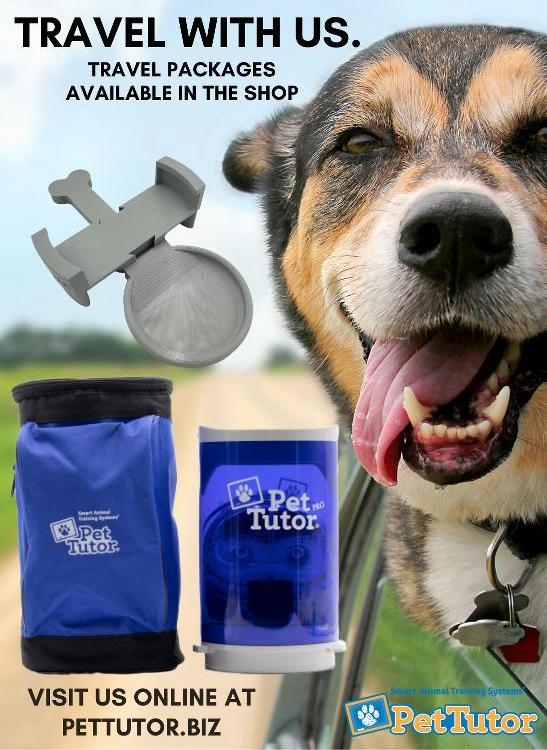
Resources
Clothier, S. (2017). Attentive Cooperation: Using Puppy Politeness Poker for Healthy Relationships. (n.p.) Flying Dog Press Clothier, S. (2019, December 12). Treat-Retreat Basics: Help for the Socially Shy Dog [Webinar] Clothier, S. (2021, March). Resource Guarding or Rule Setting? BARKS from the Guild (47) 28-30 Dehasse, J., Braem, M., & Schroll, S. (2003). Aggressive behaviours in dogs: a new descriptive-contextual classification. Poster presented at the IVBM (4th International Veterinary Behavioural Meeting), Caloundra, Australia, August 19, 2003. Proceedings n°352, Post-Graduate Foundation in Veterinary Science, University of Sydney, p.203-205 Jacobs, J. A., Coe, J. B., Widowski, T. M., Pearl, D. L., & Niel, L. (2018). Defining and Clarifying the Terms Canine Possessive Aggression and Resource Guarding: A Study of Expert Opinion. Frontiers in Veterinary Science 5 115 Marder, A.R., Shabelansky, A., Patronek, G.J., Dowling-Guyer, S., & Segurson D’Arpino, S.( 2013). Food-related aggression in shelter dogs: A comparison of behavior identified by a behavior evaluation in the shelter and owner reports after adoption. Applied Animal Behaviour Science 148 1–2 150-156 Mohan-Gibbons, H., Weiss, E., & Slater, M. (2012). Preliminary Investigation of Food Guarding Behavior in Shelter Dogs in the United States. Animals 2(3) 331-346 Patel, C. (2010, December 14). Teaching Your Dog to "Drop" [Video File]
Suzanne Clothier has been working with animals professionally since 1977. Currently based in St. Johnsville, New York, she is well respected internationally for her holistic Relationship Centered Training™ approach to dogs and the people that love them. Her background includes training, instruction, behavior modification, kennel management, temperament assessment, physical assessment and conditioning, early puppy development, class curriculum development, obedience, agility, Search and Rescue, conformation, breeding and more. Since 1991, she has taught workshops and seminars on a broad range of topics throughout the United States and internationally for a wide variety of groups from training clubs to international conferences in 11 countries. An award-winning author of multiple books and DVDs, her book, Bones Would Rain from the Sky: Deepening Our Relationships With Dogs (2002) has received widespread praise from every corner of the dog world, including twice being included in the Wall Street Journal's list of Top 5 Dog Books. She has served on the American Humane Association’s Task Force for Humane Training, the AKC Agility Advisory board, and is currently a consultant for Frankie & Andy’s Place, a senior dog sanctuary in Georgia. She has also developed multiple assessment tools CARAT™, RAT™ (Relationship Assessment Tool), as well as puppy and adult dog tests. These tools have been used by guide and service dog organizations, therapy dog groups, AAIA organizations, shelters and rescue groups, and trainers. In her work as a consultant to guide dog schools, her Enriched Puppy Protocol™ served as the structure for the updating of their puppy raising programs. Since 2007, more than 10,000 puppies have been raised in programs built around The Enriched Puppy Protocol™. Meanwhile, with fellow trainer Cindy Knowlton, she developed CCC: Connection, Cooperation & Control™, a puzzle-based program that builds joyful relationships between handlers and dogs.



